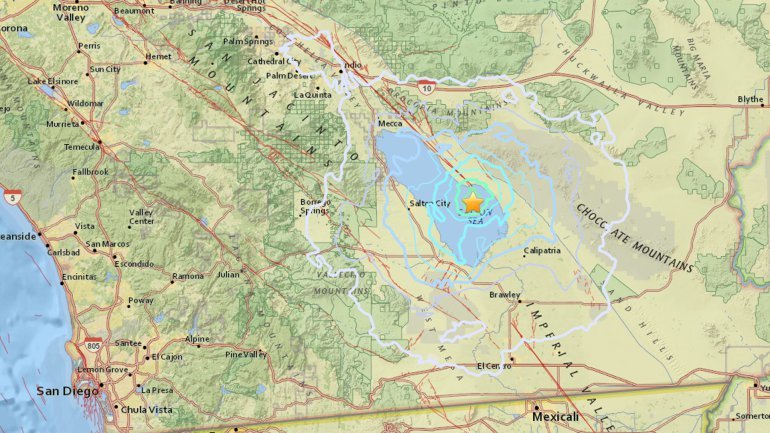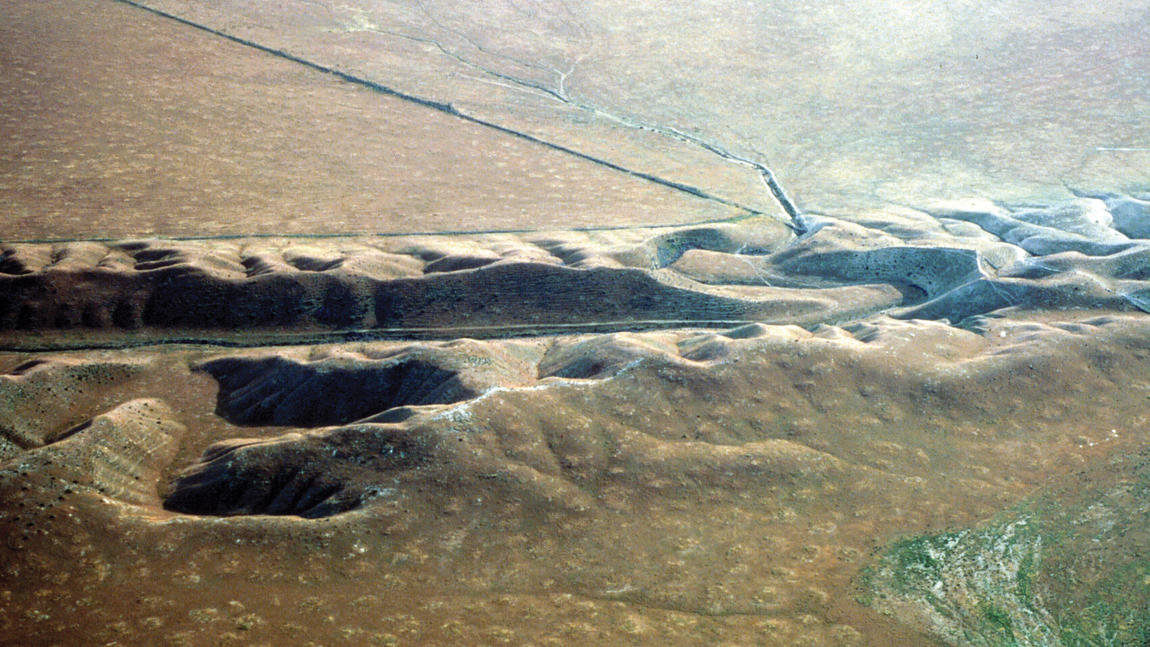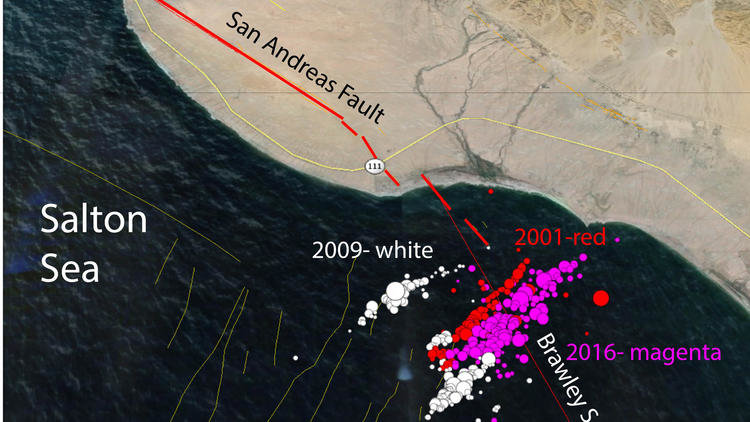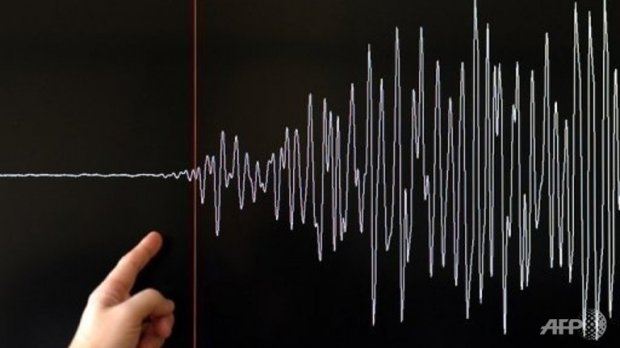
© U.S. Geological Survey)A magnitude-4.3 earthquake hit in the Salton Sea area on Sept. 26, 2016.
More than 100 small earthquakes — including three of a magnitude greater than 4 — struck the Salton Sea area Monday.
According to the U.S. Geological Survey, the swarm of quakes started early Monday morning and continued into the evening. Quakes measuring 4.3 and 4.2 magnitude occurred Monday night.
Many of the quakes were centered near Bombay Beach. They were felt in a relatively small area around the Salton Sea, according to the USGS.
Swarms of small to moderate earthquakes are
fairly common in the area. In 2009, the Salton Sea saw a swarm of more than 200 small quakes.
The sea sits atop a very thin crust that is being constantly stretched as the North American and Pacific plates grind against each other. The area is also veined by dozens of faults — most notably the San Andreas -- that run parallel to and crisscross one another.
Scientists believe that because of the thinness of the crust, hotter material can get closer to the surface and cause temblors.
Seismologist Lucy Jones said on Twitter on Monday night that magnitude 4 quakes near the San Andreas "increase the chance" of a big quake "a little bit. But we have swarms without big [earthquakes] — most likely nothing more will happen."



Comment: Many experts believe the San Andreas fault is long overdue for a potentially catastrophic earthquake: